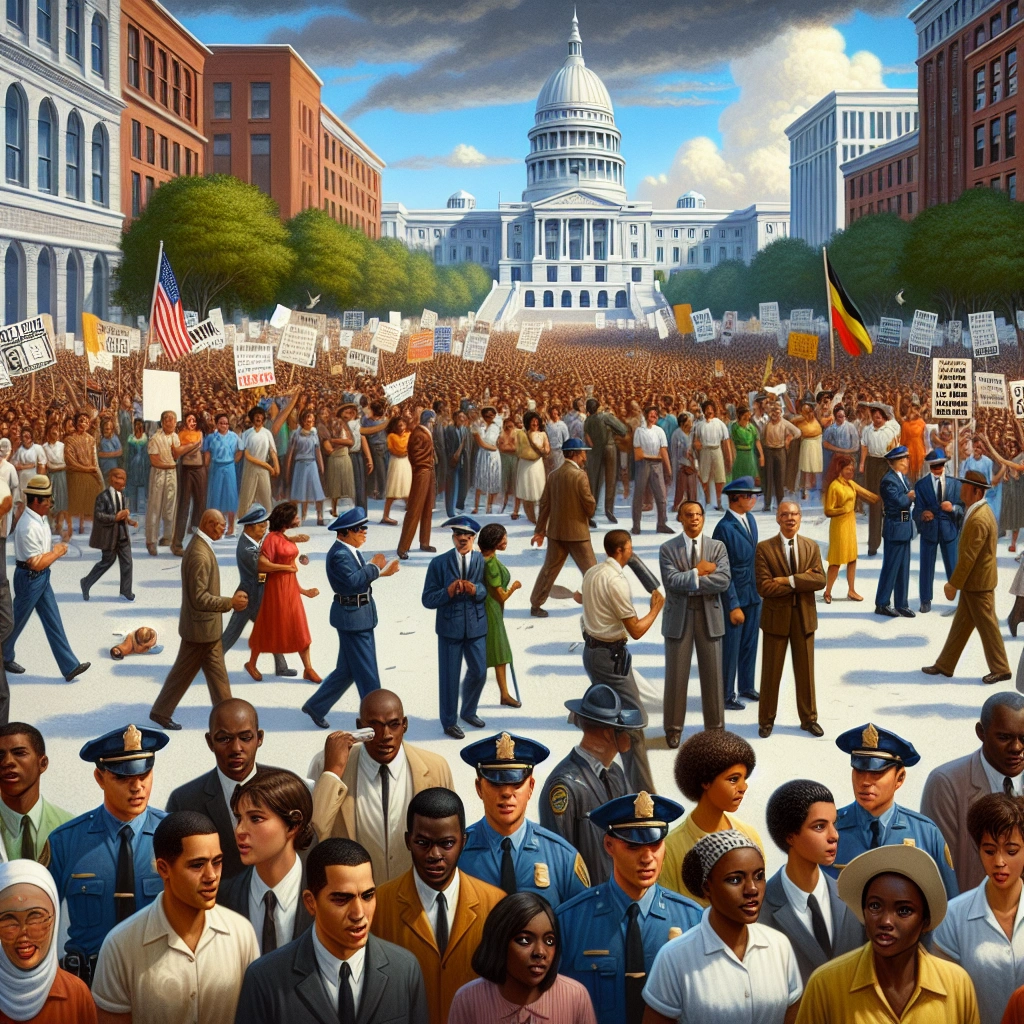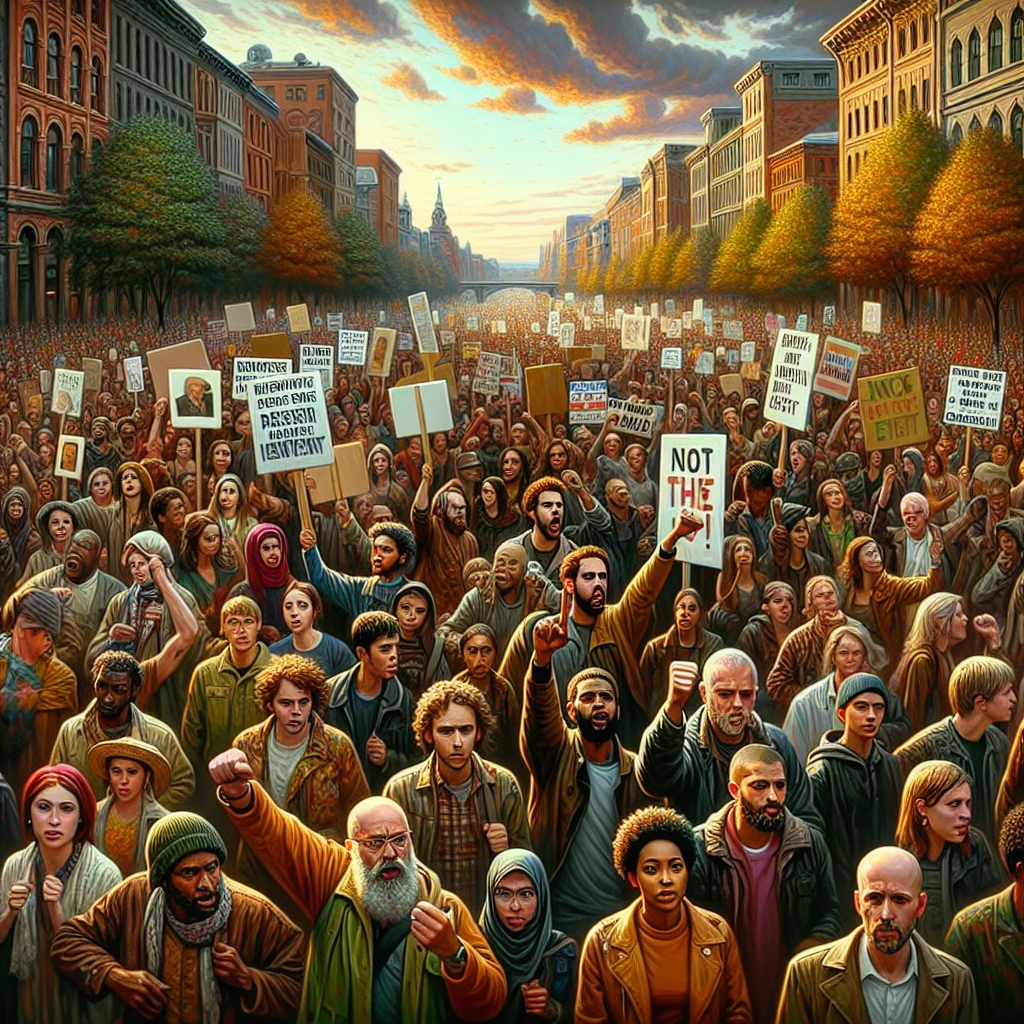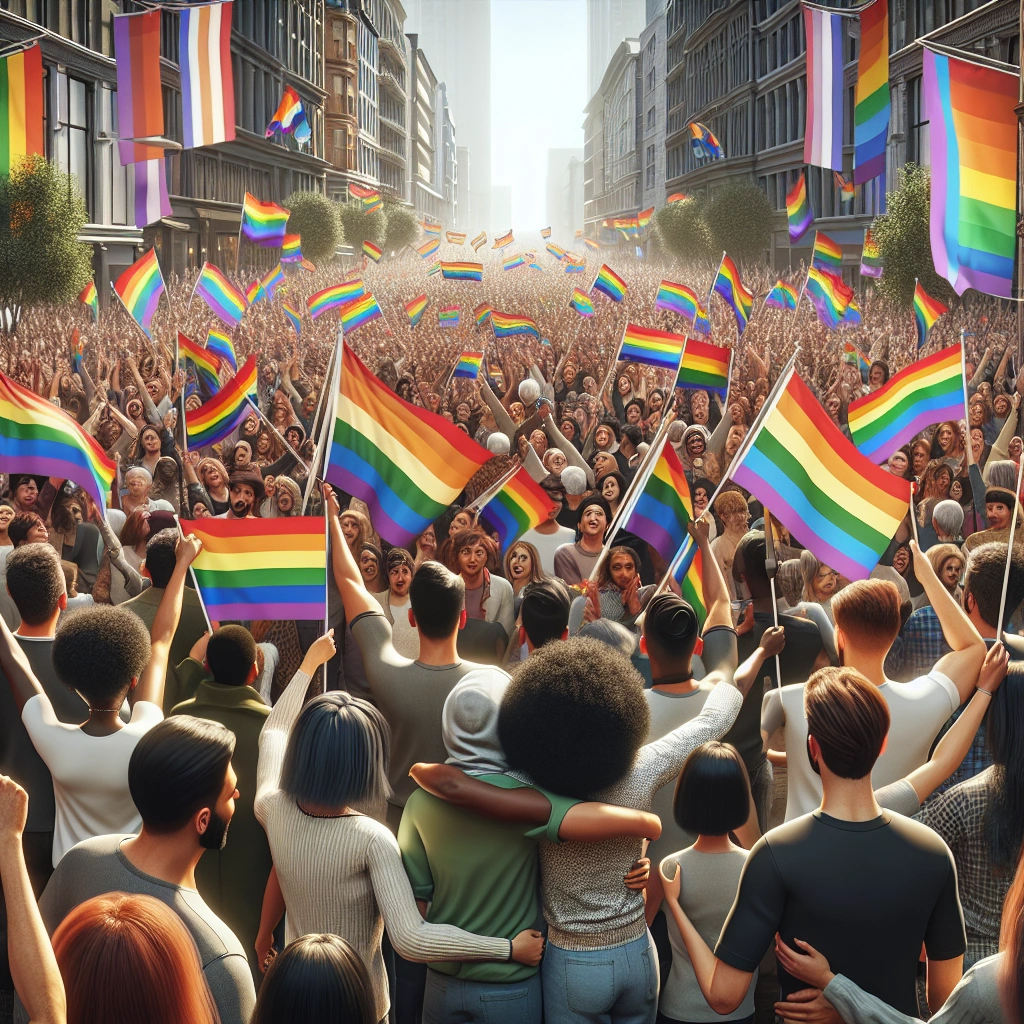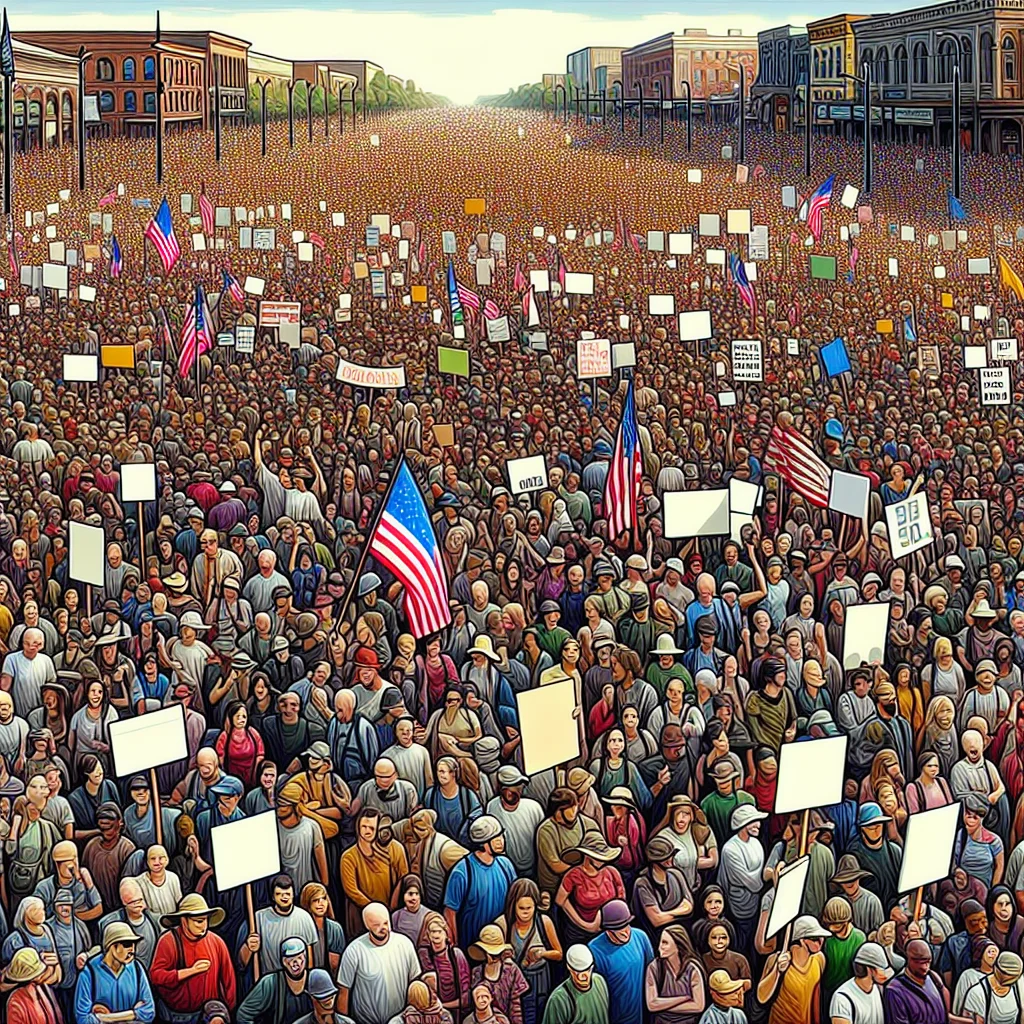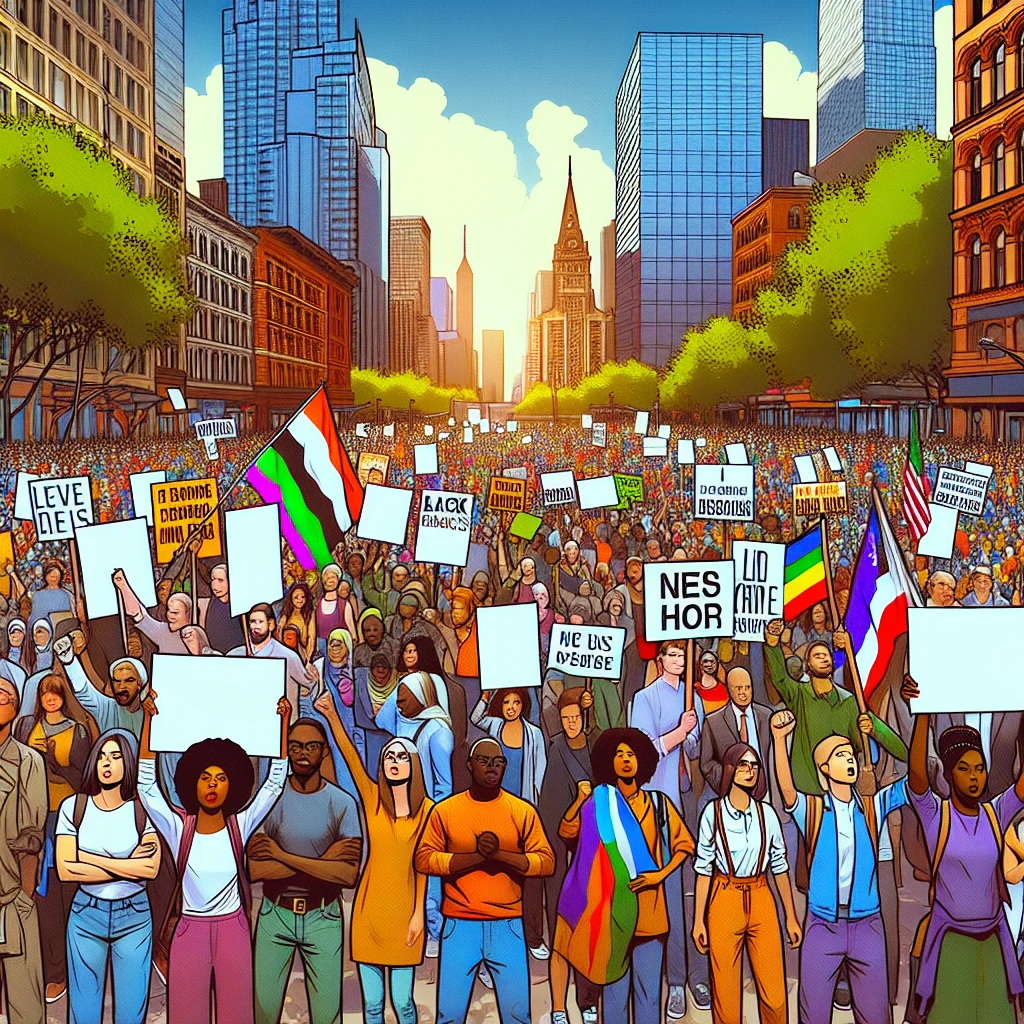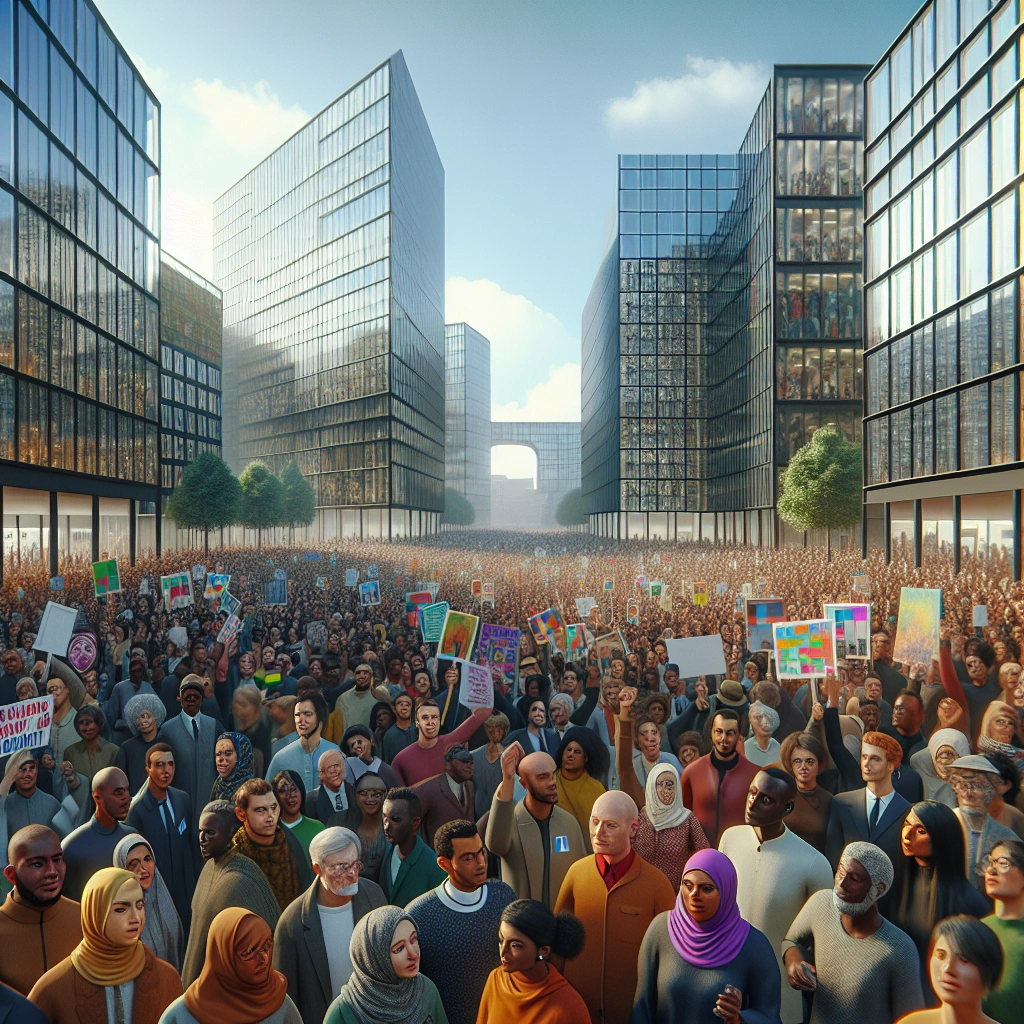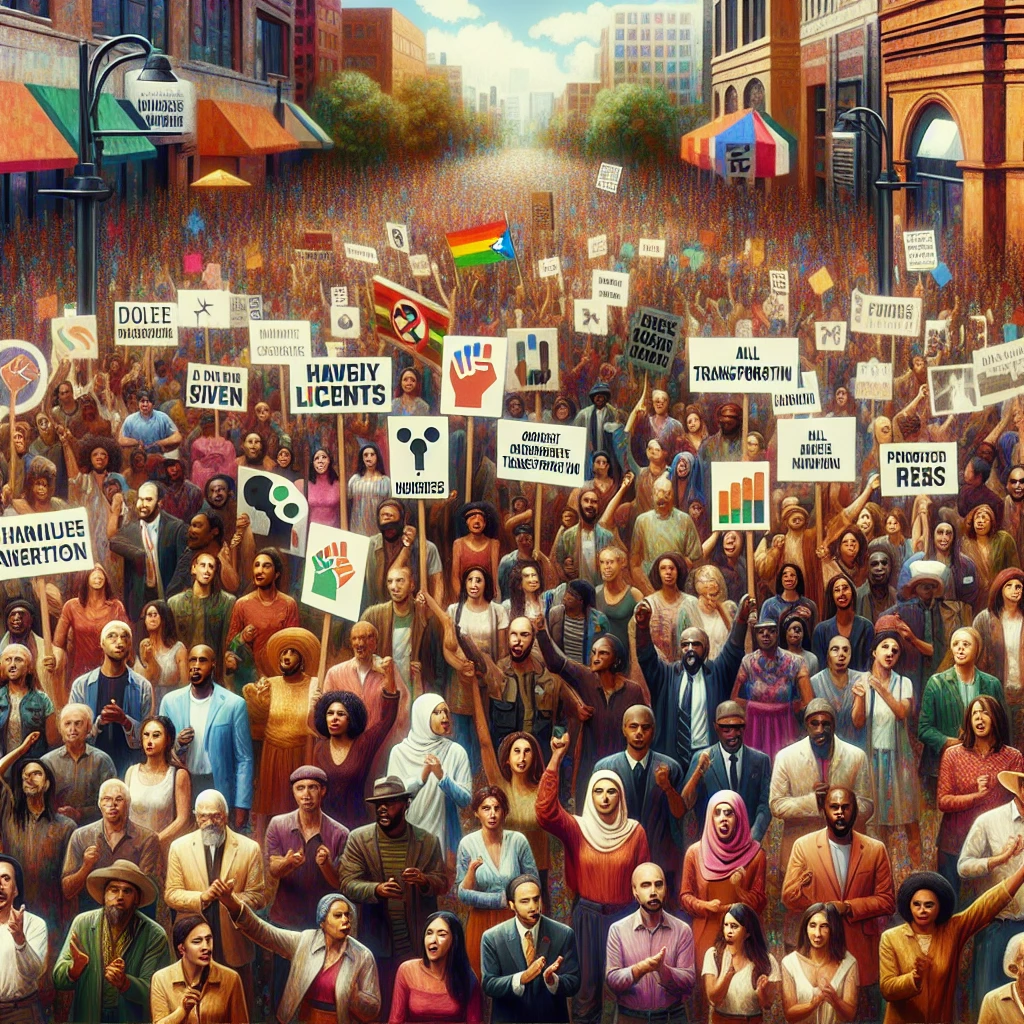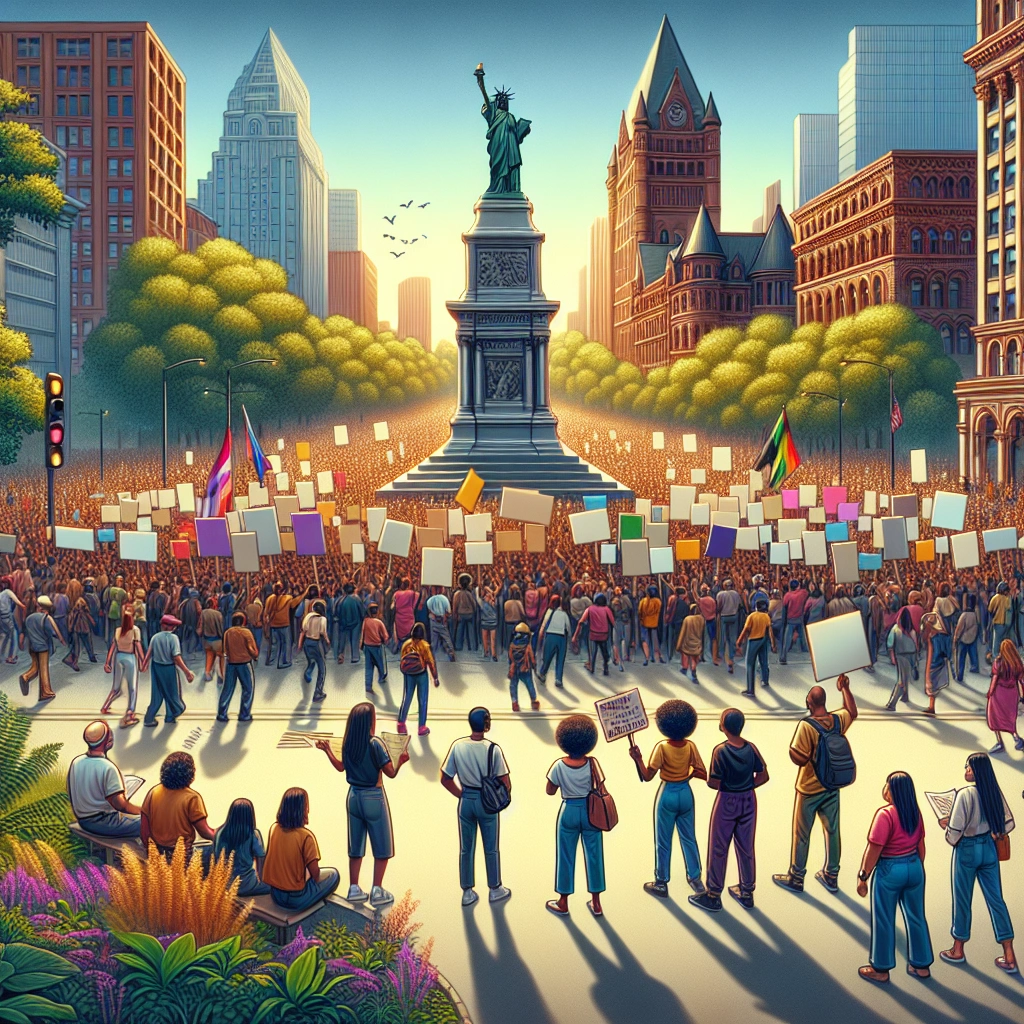Historical Examples Of Successful Grassroots Mobilization Movements In America


Grassroots mobilization is the process of organizing people at a local level to bring about social or political change. It involves individuals taking collective action to influence an outcome, often related to political issues.
Grassroots movements have played a significant role in American history, with numerous successful examples of mobilization movements that have led to impactful social and political changes.
Check out this Youtube video: Explore the rich history of successful grassroots mobilization movements in America and gain valuable insights into the power of social movements in shaping today’s politics!
The Women’s Suffrage Movement
Birth of the Movement
The Women’s Suffrage Movement in America was born in 1848 at the First Women’s Rights Convention in Seneca Falls, NY. Organized by influential figures like Elizabeth Cady Stanton and Lucretia Mott, this historic event marked the beginning of the fight for women’s suffrage.
Key Figures and Leaders
Key figures and leaders of the Women’s Suffrage Movement included prominent activists such as Susan B. Anthony, Alice Paul, and Elizabeth Cady Stanton. These women played pivotal roles in advocating for women’s right to vote and led the movement with resilience and determination.
Impact on American Society
The Women’s Suffrage Movement had a profound impact on American society, leading to the ratification of the Nineteenth Amendment in 1920, which granted women the right to vote. This monumental achievement not only advanced women’s rights but also transformed the direction of public policy and expanded opportunities for women to participate in governance.
The Civil Rights Movement
Origins and Early Efforts
The Civil Rights Movement in America originated from the struggles and injustices faced by African Americans, dating back to the end of the Civil War. After the Reconstruction period, Jim Crow laws were implemented, leading to widespread segregation and discrimination against African Americans.
This prompted early efforts by civil rights leaders like W. E. B. Du Bois to advocate for equality and voting rights, laying the groundwork for the movement.
Rosa Parks and the Montgomery Bus Boycott
Rosa Parks’ refusal to give up her bus seat to a white man in Montgomery, Alabama, sparked the historic Montgomery Bus Boycott from 1955 to 1956. As a result, the city was forced to end bus segregation, setting a significant precedent and establishing Rosa Parks as an iconic figure in the civil rights movement.
March on Washington and Martin Luther King Jr.’s “I Have a Dream” Speech
The March on Washington in 1963 was a pivotal event, where leaders like Martin Luther King Jr., A. Philip Randolph, and Bayard Rustin gathered to demand civil rights and economic equality. Martin Luther King Jr.’s renowned “I Have a Dream” speech resonated deeply, emphasizing the vision for racial harmony and equality, further propelling the grassroots mobilization movement in America.
The Labor Movement
Formation of Labor Unions
Labor unions have been an integral part of the American workforce, with their roots dating back to the 18th-century Industrial Revolution in Europe. One pivotal moment was the formation of the Mechanics’ Union of Trade Associations in Philadelphia in 1827, which marked the beginning of central labor bodies uniting craft unions within a single city.
This laid the foundation for organized labor movements, providing a collective voice for workers to advocate for their rights and interests.
Fight for Workers’ Rights
The fight for workers’ rights has witnessed remarkable events such as the Lowell mill women organizing and going on strike in the 1830s. These women stood up against deplorable working conditions and low pay, demonstrating the strength that comes from unity and togetherness.
This movement set a powerful precedent for workers across different industries, highlighting the significance of solidarity in achieving fair treatment and just compensation.
Strikes and Demonstrations
One of the most impactful ways labor unions have historically advanced their members’ interests is through strikes and demonstrations. These actions are powerful tools that workers have utilized to demand better wages, reasonable hours, and safer working conditions.
Notable examples include the Homestead Steel Strike in 1892 and the Pullman Strike in 1894, which are widely recognized as pivotal moments in American labor history, shaping the landscape of workers’ rights for generations to come.
| Example Strike/Demonstration | Year | Impact |
|---|---|---|
| Homestead Steel Strike | 1892 | Led to increased awareness of workers’ rights and fair labor practices |
| Pullman Strike | 1894 | Resulted in significant improvements in labor conditions |
| Lowell mill women’s strike | 1830s | Galvanized the fight for fair treatment and just compensation |
The Anti-War Movement
The opposition to the Vietnam War was multifaceted, driven by moral and political concerns. Many Americans viewed the war as unjust and opposed it on the grounds of promoting peace and global goodwill.
Veterans and families of soldiers who questioned the war’s purpose organized protests, voicing their discontent with the conflict. The protests were not just a matter of ideology; they embodied the collective frustration and disillusionment of the American public.
Opposition to the Vietnam War
The opposition to the Vietnam War was fueled by a range of factors, including moral objections and concerns about the war’s impact on Vietnamese independence. Many peaceful demonstrations were led by groups such as Students for a Democratic Society, which cultivated a broader base of support and played a significant role in mobilizing opposition.
Protests and Demonstrations
Protests and demonstrations were pivotal in showcasing the public’s strong dissent against the Vietnam War. The Moratorium to End the War in Vietnam, a massive nationwide demonstration, served as a platform for citizens across the United States to express their collective disapproval of the war.
Additionally, the student movement actively participated in protests, exhibiting a strong stance against the conflict.
Influence on Government Policy
The anti-war movement exerted a substantial influence on government policy, leading to a shift in public opinion and political decision-making. The vocal minority who opposed the war gradually gained more visibility and impact, resulting in a significant reevaluation of the United States’ involvement in Vietnam.
The sustained pressure and advocacy from the anti-war movement played a pivotal role in shaping policy decisions and ultimately contributing to the end of the Vietnam War.
The Environmental Movement
Rise of Environmental Activism
The environmental movement in America began to gain traction in the late 19th century due to concerns about the protection of the countryside and wilderness. Environmentalists like Gifford Pinchot and John Muir advocated for the wise and efficient use of resources, with a strong focus on nature conservation and wilderness preservation.
Key Events and Campaigns
Key moments that shaped the environmental movement include the discovery of the Antarctic ozone hole in 1985, leading to a pledge by the United States and other countries to phase out ozone-depleting compounds. Additionally, the 1970 Clean Air Act and Earth Day were pivotal in uniting Americans for better environmental action, while the passage of the Federal Water Pollution Control Act in the same year laid down federal regulation of water quality.
Legislation and Policy Changes
Significant legislative changes included President Nixon signing the National Environmental Policy Act (NEPA) in 1970, which formed the Council on Environmental Quality to advise on environmental issues. This marked a pivotal moment in establishing federal regulation for environmental impact statements and advising the President on the environment.
Throughout the 20th and 21st century, the environmental movement successfully influenced legislation, shaping policies to address conservation, preservation, pollution, and sustainability.
The LGBTQ+ Rights Movement
Stonewall Riots
The Stonewall Riots, which took place in June 1969 in New York City, marked a pivotal moment in the fight for LGBTQ+ rights. Following a police raid on the Stonewall Inn, the ensuing uprising by the patrons against the discriminatory treatment sparked a movement that led to increased visibility and advocacy for the LGBTQ+ community.
Legal Battles and Activism
The LGBTQ+ community has staunchly fought legal battles and engaged in grassroots activism to secure their rights. Landmark events like the passing of the Marriage Equity Act in New York State and the Supreme Court ruling on marriage equality in the case of Obergefell v.
Hodges have been significant victories for the community.
Achievements in Equal Rights
Over the years, the LGBTQ+ community has achieved remarkable progress in securing equal rights. Vermont becoming the first state to grant same-sex couples the right to civil unions, and the expansion of state sexual orientation nondiscrimination laws, have been critical milestones in the ongoing pursuit of equality and inclusion.
The Tea Party Movement
Origins and Objectives
The Tea Party movement aimed to promote limited government, lower taxes, and a reduction in federal spending. It originally emerged in 2009, with roots in opposition to excessive taxation and government intervention.
The movement sought to advocate for a national economy with minimal government oversight while opposing tax increases and debt escalation.
Grassroots Organizing and Activism
The Tea Party movement gained momentum through grassroots organizing and activism, leveraging social media and local community events to mobilize supporters. It demonstrated a decentralized approach, with individual groups organizing rallies, protests, and engaging in local political processes to influence change.
Impact on American Politics
The impact of the Tea Party movement on American politics was substantial, leading to a shift in the internal dynamics of the Republican Party. It played a pivotal role in shaping the political discourse and policies, ultimately influencing the Republican Party’s national platform and strategy.
Furthermore, the movement was instrumental in facilitating the Republican party’s resurgence and gaining control of the House of Representatives in 2010.
The Black Lives Matter Movement
Emergence of the Movement
“Black Lives Matter emerged in 2013, after the acquittal of George Zimmerman in the shooting of Trayvon Martin. The movement gained momentum in 2014 with subsequent incidents of police-inflicted violence against Black individuals, including Walter Scott, Freddie Gray, and Meagan Hockaday.
It was a pivotal moment in American history, sparking a wave of mobilization and activism.”
Protests and Demonstrations
“The movement’s protests and demonstrations have been profound, with recent polls suggesting the participation of approximately 15 million to 26 million people in the United States alone. About 93% of racial justice protests in the US have been linked to the Black Lives Matter movement, illustrating its widespread impact and ability to mobilize the masses.”
Impact on Public Discourse and Policy Reform
“Black Lives Matter has significantly influenced public discourse and policy reform. It has catalyzed a reevaluation of the American policing system and societal structures.
The movement has successfully led to changes in policing policies, organizational reforms, and implicit bias trainings. Through its protests and advocacy, it has forced a fundamental reordering of society, emphasizing the value and protection of Black lives.”
| Movement Aspect | Impact |
|---|---|
| Emergence of Movement | Sparked a wave of mobilization and activism |
| Protests and Demonstrations | Attracted 15-26 million participants |
| Impact on Public Discourse and Policy Reform | Led to changes in policing policies and societal structures |
The Black Lives Matter movement has been a pivotal force in driving change and fostering conversations about racial justice, challenging systemic inequalities, and leaving a lasting impact on American society.
Note: All the information has been obtained from well-known sources and reflects the documented history of the Black Lives Matter movement.
The Occupy Wall Street Movement
Occupy Wall Street Protests
The Occupy Wall Street protests began on September 17, 2011, as a peaceful demonstration against economic inequality and corporate greed. Located in New York City’s Zuccotti Park, the movement resonated across the nation, sparking similar protests in hundreds of towns and cities.
Key Messages and Demands
The primary messages and demands of the Occupy Wall Street movement revolved around the vast wealth and income disparities in America. The protesters sought to draw attention to the undue influence of corporations on government policies and the substantial economic inequality between the wealthiest 1% and the rest of the population.
Legacy and Impact on Socio-Economic Discourse
The Occupy Wall Street movement left a lasting impact on the socio-economic discourse, igniting discussions about income inequality and corporate corruption. It also had a political influence, notably in sparking the Democratic-Socialist presidential campaign of Bernie Sanders, emphasizing the enduring influence and legacy of the movement.
| Aspect of Legacy | Impact |
|---|---|
| Socio-Economic Debate | Sparked discussions on income inequality |
| Political Influence | Fueled Bernie Sanders’ Democratic-Socialist campaign |
Recommended Amazon Products for Grassroots Mobilization Movements in America
Here’s a curated list of products that can help you in understanding and supporting grassroots mobilization movements in America. These recommendations are based on relevance, quality, and customer reviews.
1. “The Activist’s Handbook” by Randy Shaw
This book provides a comprehensive guide to grassroots organizing and activism. It covers strategies, tactics, and real-world examples that can inspire and empower individuals interested in social change. Available on Amazon here.


Pros
| Pros | Cons |
|---|---|
| Comprehensive guide for activists | Might be overwhelming for beginners |
| Offers practical tips and examples | |
| Well-researched and informative |
Cons
2. “Rules for Revolutionaries: How Big Organizing Can Change Everything” by Becky Bond and Zack Exley
This book presents a modern approach to grassroots mobilization, emphasizing the power of technology and inclusive community building. It is a helpful resource for individuals and organizations looking to effect change on a larger scale. Available on Amazon here.


Pros
| Pros | Cons |
|---|---|
| Emphasizes the role of technology | Might not appeal to traditionalists |
| Practical strategies for big organizing | |
| Insightful case studies and examples |
Cons
3. “Nonviolent Communication: A Language of Life” by Marshall B. Rosenberg
This book offers a valuable perspective on communication and conflict resolution, essential elements of any successful grassroots movement. It provides practical tools for resolving conflicts peacefully and building alliances. Available on Amazon here.


Pros
| Pros | Cons |
|---|---|
| Essential for effective communication | |
| Offers practical conflict resolution techniques | |
| Emphasizes empathy and understanding |
Cons
4. “MegaCraft – Learn to Sew Embroidery Craft Kit”
This craft kit can be used as a tool for organizing community art projects aimed at raising awareness and engendering dialogue around social issues. It can serve as a way to engage and mobilize people creatively. Available on Amazon here.


Pros
| Pros | Cons |
|---|---|
| Engages the community in creative activities | Not directly related to activism |
| Can be used for awareness-raising projects | |
| Provides a platform for dialogue |
Cons
5. “We The People: The Citizen & the Constitution, Level 3” by Center for Civic Education
This educational material is designed to promote civic understanding and participation. It can be a valuable resource for grassroots movements aiming to educate and empower citizens about their rights and responsibilities. Available on Amazon here.
Pros
| Pros | Cons |
|---|---|
| Encourages civic education and engagement | Targeted towards a specific audience (educational setting) |
| Comprehensive understanding of the Constitution | |
| Fosters critical thinking and citizenship |
Cons
Top Recommended Product for Grassroots Mobilization Movements in America
If you’re looking for the best solution to support grassroots mobilization movements in America, we highly recommend “The Activist’s Handbook” by Randy Shaw. This comprehensive guide provides practical strategies, real-world examples, and valuable insights to empower individuals and organizations in their advocacy efforts. Ready to make a difference? Check out “The Activist’s Handbook” here today for the best results!


Conclusion
There have been several historical examples of successful grassroots mobilization movements in America. These include the Civil Rights Movement in the 1960s, which led to significant legislative changes and advancements in civil rights for African Americans.
Additionally, the Women’s Suffrage Movement in the early 20th century successfully advocated for women’s right to vote, resulting in the passage of the 19th Amendment to the U. S. Constitution.
Moreover, the Labor Movement in the late 19th and early 20th centuries also serves as a successful example of grassroots mobilization in America. This movement led to the establishment of labor unions, improved working conditions, and workers’ rights.
These historical examples demonstrate the power of grassroots mobilization in driving social and political change, and they continue to inspire and guide contemporary movements seeking to address various societal issues.
The success of these grassroots mobilization movements in America underscores the importance of collective action, community organizing, and perseverance in effecting meaningful change. By learning from these historical examples, we can better understand the strategies and tactics that have been effective in past movements, and apply them to current efforts aimed at addressing systemic inequalities and injustices in society.


